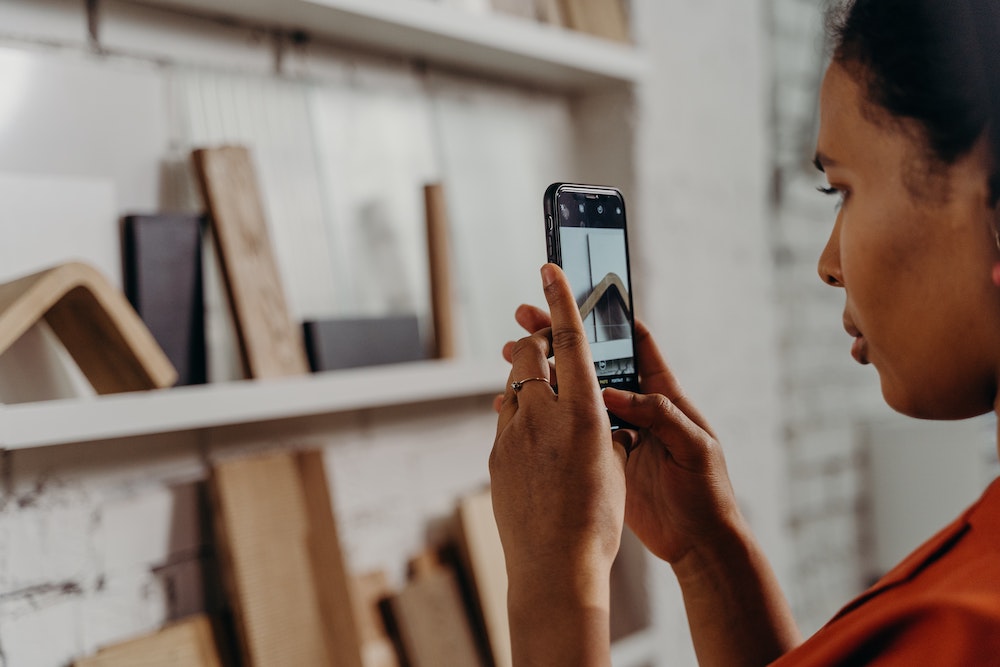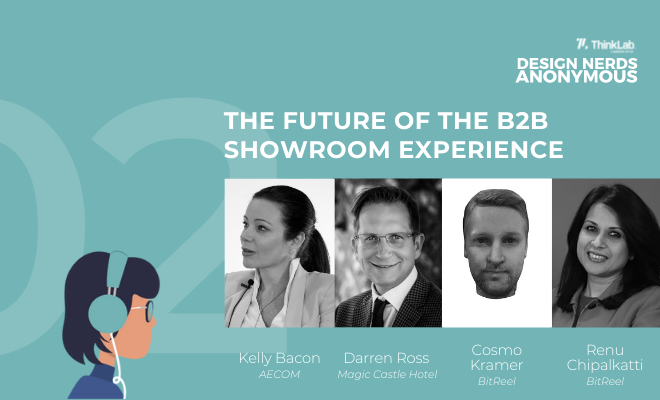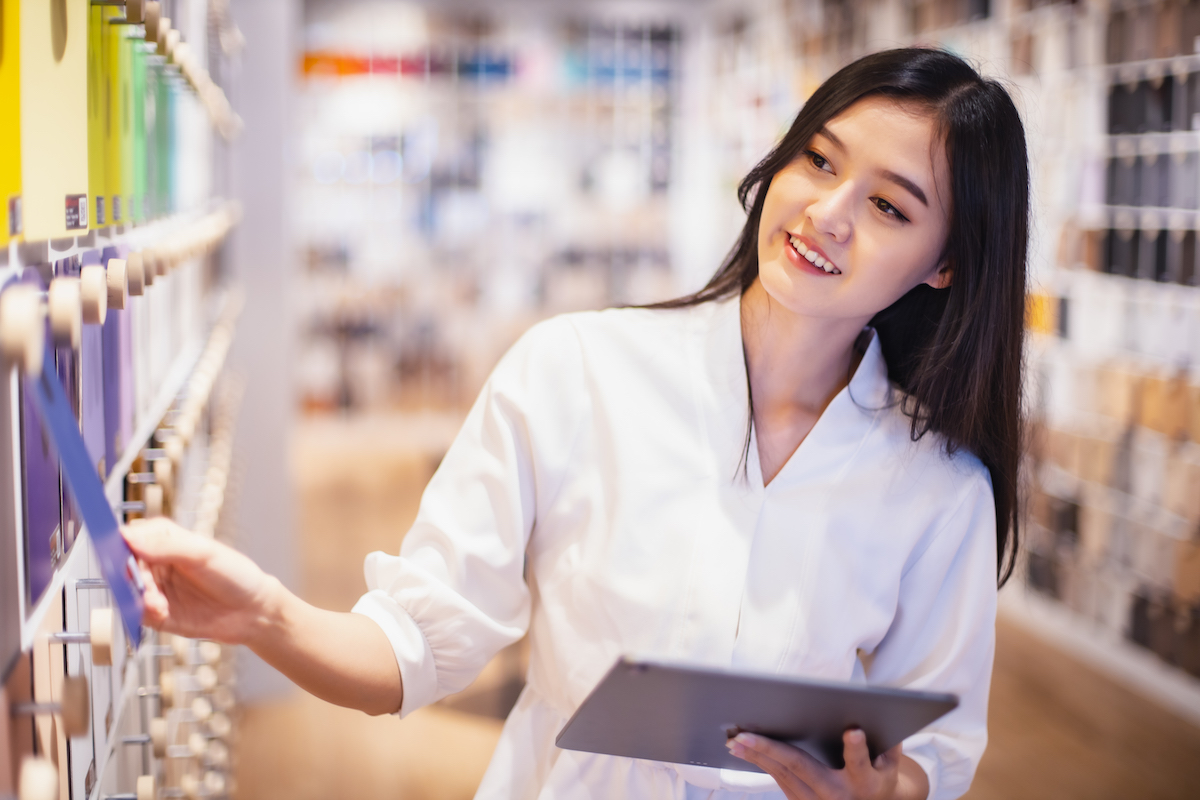
As the world transitions back to some form of in-office work, everyone is looking to dust off the old and refresh real estate with a sense of a new way forward. And the showroom experience is no different. If you’ve been twiddling your thumbs, anxiously waiting for clients to step back in to your space and to dazzle them with your latest offering, you’re in luck. They’re ready, too! But not for the same old same old.
There is one thing we know for sure from our research into the world of design: Manufacturers can’t serve an architect or designer’s journey through the specification process in the same way anymore.
And your showroom is (or should aspire to be) a critical stop along that journey. So, we have to reimagine it, bringing the best of what we’ve learned from our virtual reality along with us and nurturing the physical human interactions that tech cannot (thankfully) replicate. (For more on that, read our article about nap pods, bikes, and how they relate to the showrooms of the future, too.)
Combine that revelation with the fact that some of the largest investments a manufacturer can make are in people and real estate. A showroom (or, if you’re big enough, showrooms) is often located in a larger market with a long lease and less-than-optimal designer traffic (unless there’s a trade show in town), and so it can be one of the most scrutinized assets you have.
And the B2B sales and specification game that used to be played human-to-human and face-to-face warranted a glam space to show off product. (I should know, I used to design said spaces for some pretty design-forward contract furniture brands.)
But the old ways of doing business and balancing competing financial priorities (people vs. space vs. tools vs. tech) are spreading manufacturers’ budgets thin. So how can you maximize your showroom’s ROI in a hybrid world? Cut and run? Nah, we wouldn’t go that far. Designers still want a place to “kick the tires.”
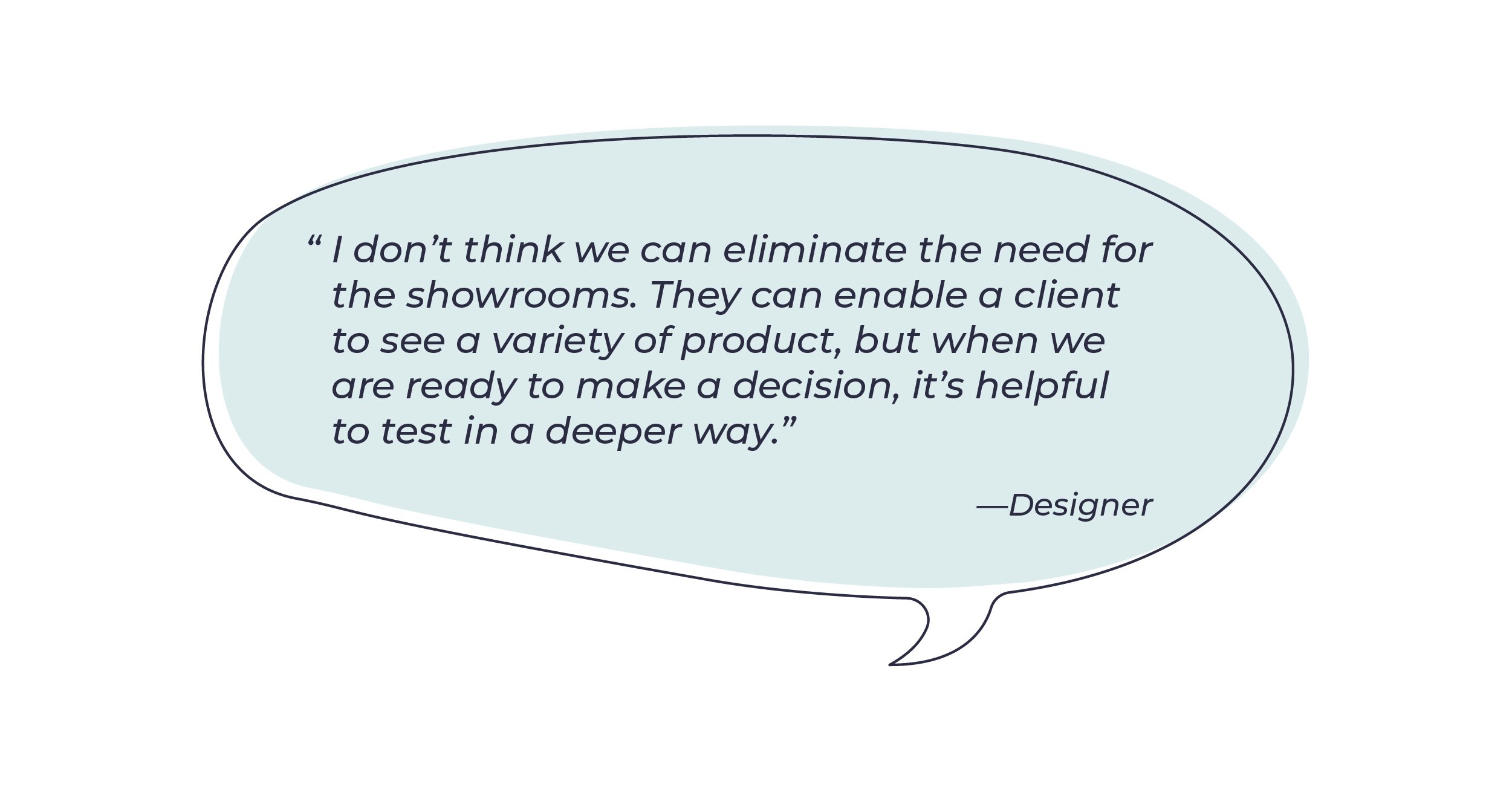
Let’s look at three simple yet impactful ways to phygitize your space for the future: transforming the traditional showroom tour, seamlessly integrating digital tools to augment the human experience, and centering the human element.
Reimagine the traditional showroom tour.
Gone are the days of twirling chairs and herding tour groups from one product vignette to another, ready to show off those F and Bs. Forbes has reported that 74 percent of Americans prioritize experiences over products, millennials most of all.
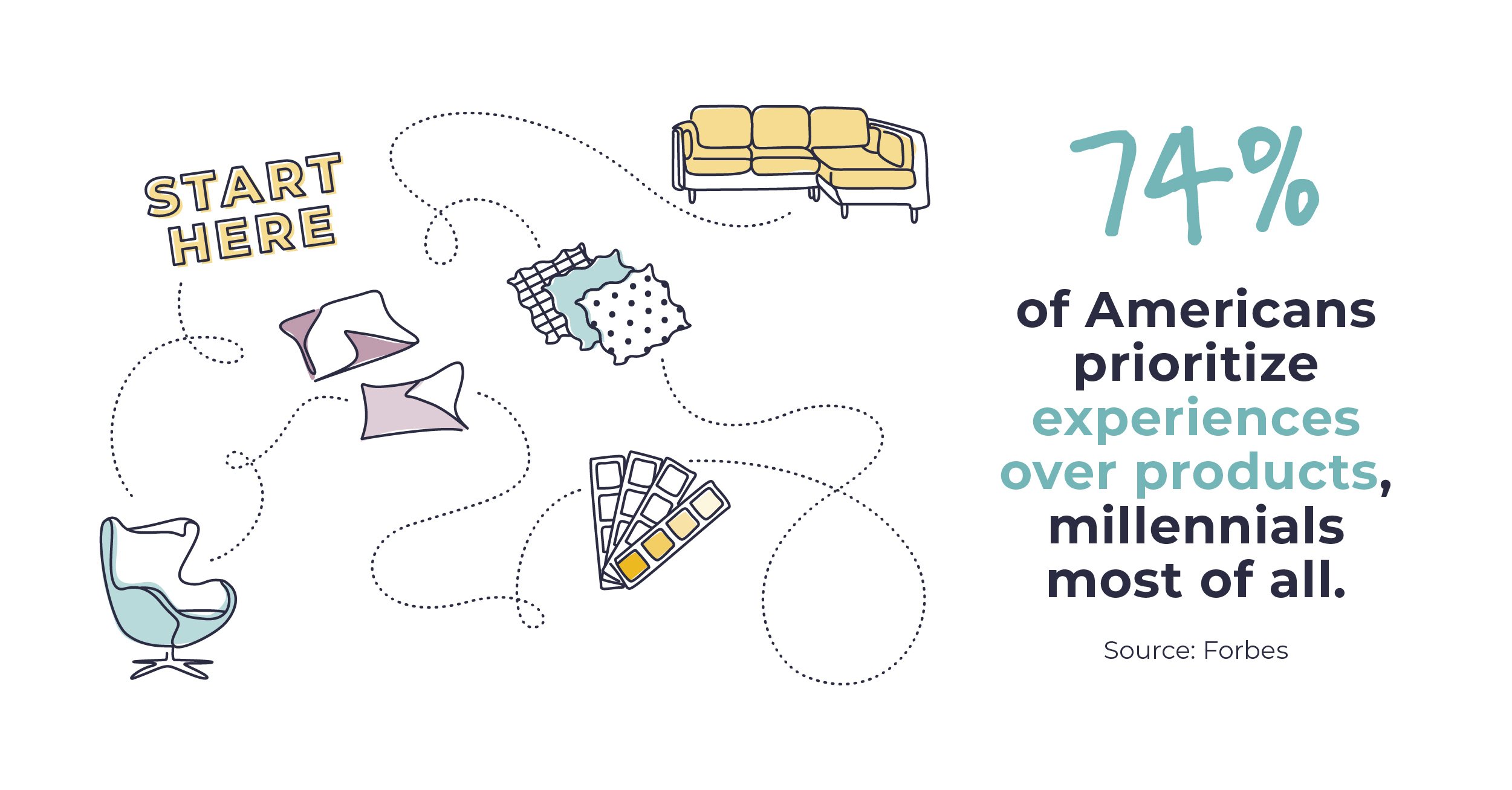
The tour must evolve — consider these ideas to elevate your showroom experience:
- Reimagine the tour as a professional scavenger hunt with strategically pre-planned “stops” along the way. And cater it to your audience — designers don’t want to feel like you think one size fits them all.
- Create a learning lab where cross-functional design teams can come together when they’re not in the office and workshop with their clients in your space instead.
- Offer the showroom to the community to use as a co-working space. (The A&D community is a give-back kind of bunch; they’ll appreciate your inclusivity and social outreach.) This also helps end user patrons “kick the tires” and provide product feedback in exchange for the free desk and Wi-Fi.
- Make sure the kitchen isn’t buried in the back. Think family-style island and a glass-front refrigerator stocked with beverages and locally made snacks that say, “I’m free.”
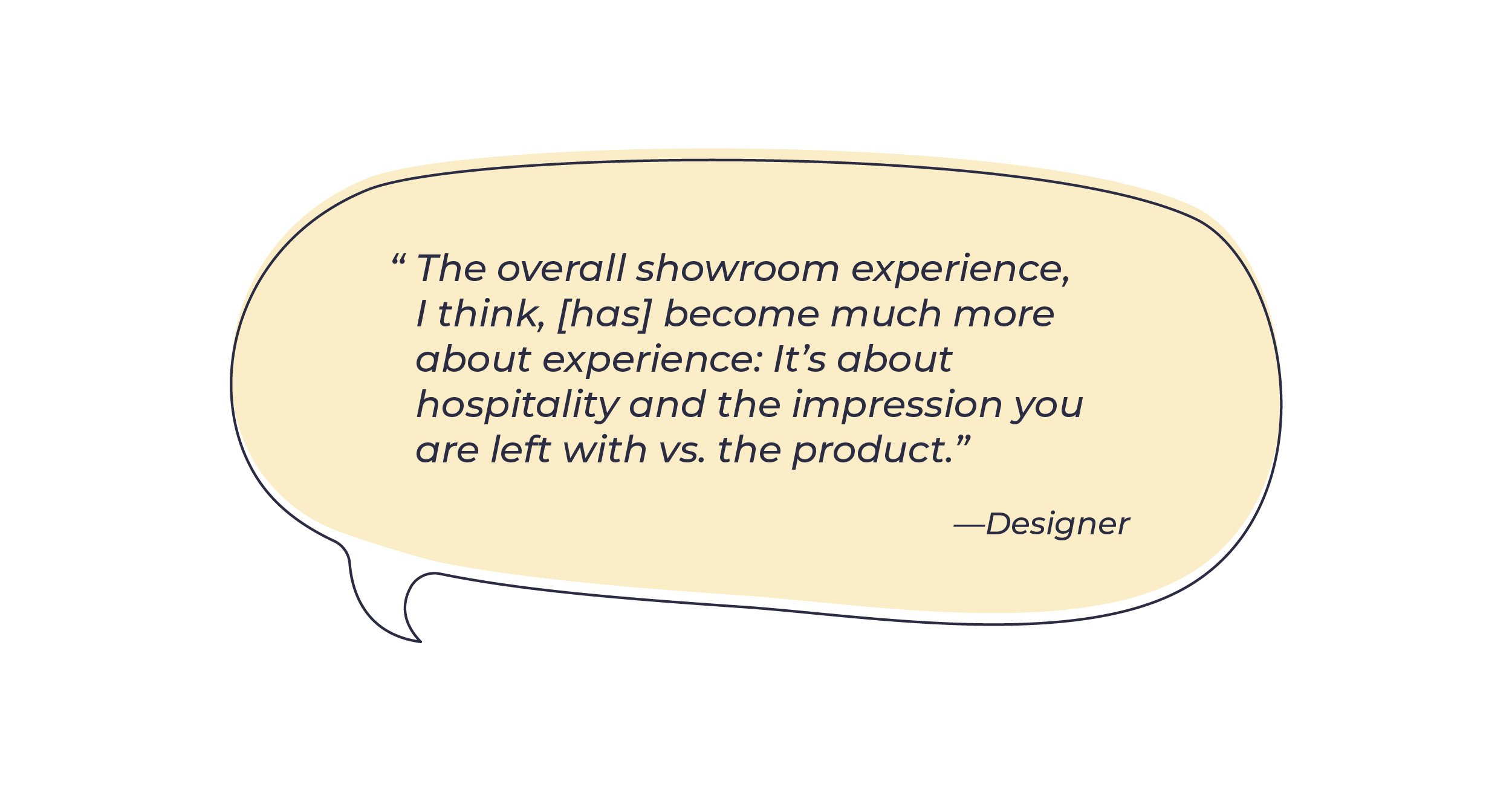
Seamlessly integrate digital tools to augment the human experience.
There are a variety of benefits to digitizing your showroom experience: from reaching more people to tracking the most popular areas of your space to more seamless post-event follow-up. One of our favorite ways to wow your target audience with tech is by creating an online virtual tour.
This tip might sound “no duh,” but this isn’t your traditional showroom fly-through video.
We love this new platform from Matterport that not only allows you to do a fly-through of the space but also gives you the ability to take measurements, tag favorites, and shop along the way. Furniture company Castlery partnered with Matterport to create their virtual studio. If shoppers like what they see, all it takes is one click to be instantly directed to the product page or get connected with an expert for help.
If Castlery can do it, so can you. (Unless you’re Castlery, in which case, you already have! Well done.)
Dream big. The future of online showroom tours can allow your clients to:
- Order samples
- Download product symbols
- Create a digital wish list that saves their favorites
- Download photos from the environments they like
- Get to the product page on the website
- Talk to customer service for support
- Schedule an in-person follow-up appointment
- Buy “now”
Feeling inspired? We hope so. Need more inspo? Check out how Timberland is leveraging tech called near-field communication technology. (Think Apple Pay, but it transfers knowledge instead of cash.) You use a personal device loaded with this tech, tap it against products and images as you browse a showroom, and information is immediately sent to your device. It gets better: Once the app learns your preferences, it starts to recommend products based on those interests.
No human needed, you fear? Maybe not for that sweet, self-guided browsing journey, but fear not. We’re just getting to tip number three.
Don’t forget about the human element.
The virtualized showroom of tomorrow still needs the human who represents your brand, bringing the experience to life when your client is face-to-face and needs the expertise they can’t reproduce digitally. Designers don’t want to be responsible for a mistake, and they need brand partners — be it your reps, customer service rock stars, or showroom managers — to help save them from themselves. What’s more, designers and their clients still want to touch and feel, get inspired by unique applications, understand scale, and kick the tires when the time is right.
Did you know you have seven seconds to make your first impression when someone enters your physical space? Positioning your showroom manager behind a large desk as they enter your echo chamber of a space makes your client feel like they’re at the dentist, and nobody has ever been inspired at the dentist.
Here are a few ways to center the human element in your showroom:
- Cater to all five senses. Your space needs to be more than eye candy. How can you engage with smell, touch, sound, and taste, too?
- Upskill your showroom manager into a “surprise and delight” concierge. Learn how the hospitality industry has implemented different experiences that cater to its clientele, and help it stay competitive, in this article. They had to evolve, too. Hotel patrons can use Yelp to find a restaurant, so why talk to the concierge anymore? You might be surprised . . .
Create your own moments of “surprise and delight.” Think Easter egg hunt — unexpected and unforgettable. We love how Magic Castle rocks this concept with their Popsicle hotline. Their fantastic reviews have less to do with some fancy-pants aesthetics and more to do with creating moments of — you guessed it — surprise and delight. We recently interviewed their COO, Darren Ross, who shared his advice: “Be a customer service company first that functions at whatever it is you do.” Free Popsicle from the Popsicle hotline, anyone? Sign me up — I’ll take grape.
So even if you have the shiniest little space on the hippest new corner of Hip-ville, we’ve got news for you.
Your showroom might be begging for a face-lift — or perhaps mindshift — one that embraces different physical and digital journeys, integrates technology seamlessly along the way, personalizes the experience to the client (B2C style), and offers that personal touch that helps seal the deal (Popsicle, anyone?).
Kelly Bacon, global practice lead of Workplace Advisory for AECOM, was interviewed in our podcast on the future of showrooms and told us, “When I think about showrooms, I hope that we’re entering an era of piloting, experimentation, testing, and tinkering, because things are going to continue to evolve.”
Need more actionable ideas to evolve your showroom? We’ve got more resources for you:
- Listen to more of what Kelly and other industry thought leaders have to say on the future of showrooms on this episode of Design Nerds Anonymous.
- Get 20 of our best tips on creating showstopping showrooms of the future when you download the first chapter of our latest playbook, 100 Ways to Create a Phygital Sales and Marketing Strategy. Download your free chapter here.
As you start to take action on what all of this might mean for your brand, we’ll leave you with this sentiment from our podcast interview with the CEO of Casper Mattress, Emilie Arel:
“People like to see and touch as part of their buying experience. People want digital to be part of the experience, but not all of the experience. So how are we thinking of omnichannel? Typically (in retail), people think online and in store. That’s not omnichannel. That’s two different channels. We have to think about the interplay between channels. The real winners over the next couple of years are really going to emerge as those who integrate the experience across channels.”
Allison Roon is responsible for Creative Content Development for ThinkLab, the research division of SANDOW Design Group. At ThinkLab, we combine SANDOW Media’s incredible reach to the architecture and design community through brands like Interior Design Media, Metropolis, Luxe, and Material Bank with proven market research techniques to uncover relevant trends and opportunities for the design industry. Join in to explore what’s next at thinklab.design/join-in.


